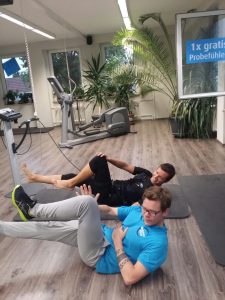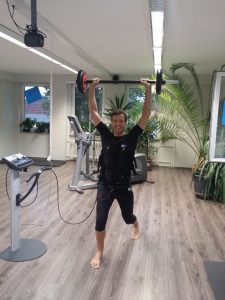 In order to get an idea, I have had a few EMS sessions in the past bodytecpoint completed in Nuremberg. There were short 20min units with a focus on full-body exercises. The main muscles are activated by means of electrical impulses in 5-second intervals. In between each 10 seconds without pulse. The strength of the impulses is controlled depending on the athlete's level of performance and ranges from minimal to rigidity 🙂
In order to get an idea, I have had a few EMS sessions in the past bodytecpoint completed in Nuremberg. There were short 20min units with a focus on full-body exercises. The main muscles are activated by means of electrical impulses in 5-second intervals. In between each 10 seconds without pulse. The strength of the impulses is controlled depending on the athlete's level of performance and ranges from minimal to rigidity 🙂
Simply discussed, athletic training is practically completed, which is made more difficult by the frequently recurring electrical impulses, or which requires significantly increased muscle work. Indeed, you will have mild to moderate muscle soreness for the next two days.
A great advantage of training is its effectiveness with minimal duration. The muscles get used to the impulses, ie the sore muscles are less severe over time. However, the strength of the impulse can also be increased to compensate for this. Accordingly, like in classic strength training, you work with increasing difficulty.
It should be noted that EMS training does not replace strength training, but rather equates with advanced athletic training, which also seems sufficient for triathletes. The disadvantage is the rather high costs of 10-15 € per session. However, the units are led by a trainer and you are done with the Tra in no time ining. 2x / week in winter and 1x / week in spring and summer is sufficient to strengthen the muscles. In my opinion, the purpose of athletic training in triathlon is primarily to prevent injuries. The stronger the muscle corset, the less frequent overloads and injuries occur.
ining. 2x / week in winter and 1x / week in spring and summer is sufficient to strengthen the muscles. In my opinion, the purpose of athletic training in triathlon is primarily to prevent injuries. The stronger the muscle corset, the less frequent overloads and injuries occur.
Just test whether it is something for you. There are now numerous studios that you can simply pay a visit to.
successful training!
your krelli

